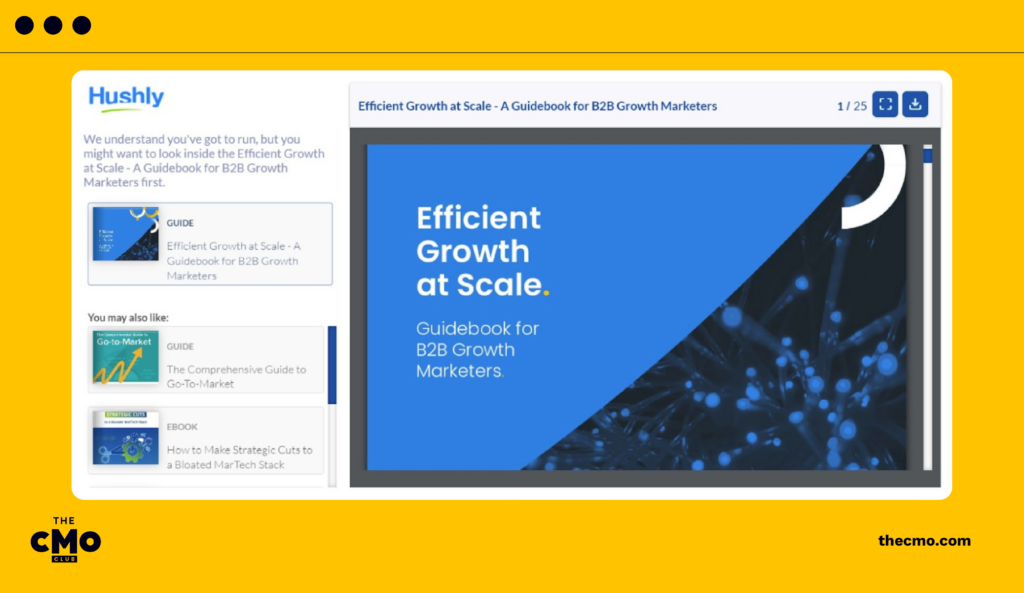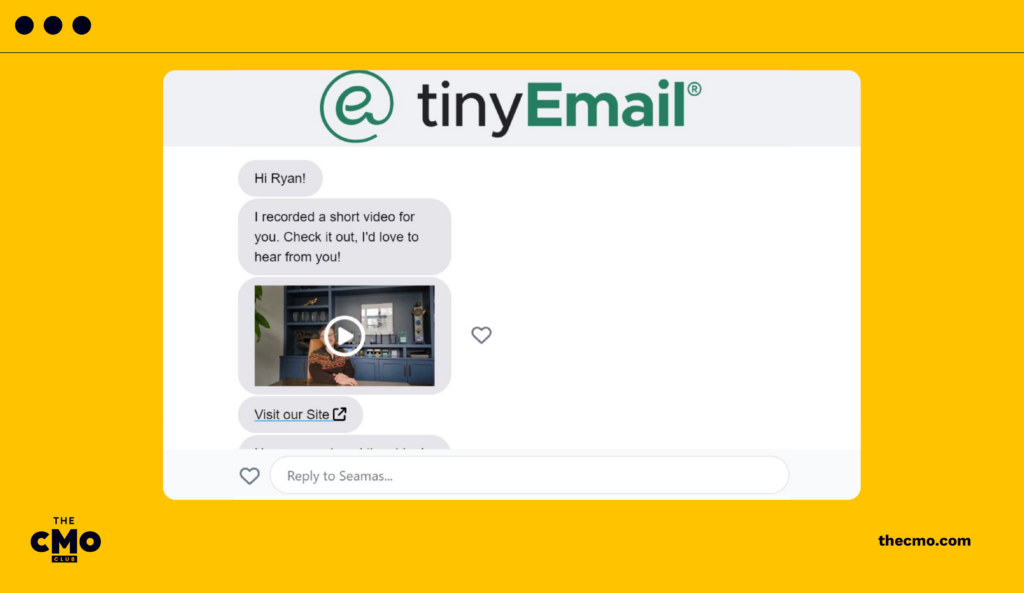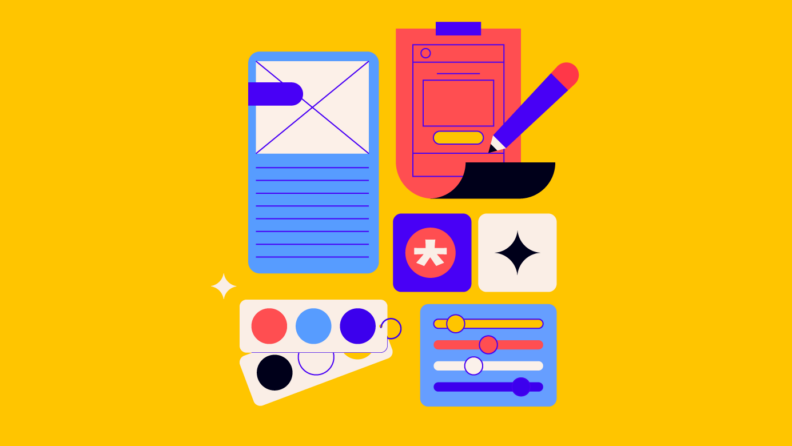Marketers love talking about personalization strategy. But as with so many things in Marketing Land, it’s so easy for marketer-to-marketer conversations to be disconnected from what consumers want.
While it’s easier than ever to personalize your marketing with the latest account-based marketing (ABM) software, the path to effective campaigns still starts with your audience.
According to Leala Shah Crawford, Managing Director for Deloitte Digital, your personalization approach “depends on the industry, the company, the brand—and the customers as individuals.” Once you’ve got enough data to truly understand your customers, what’s important to them, and what drives their behavior, you’re ready for the next step: a personalization strategy.
If you haven’t quite nailed your personalization efforts—whether for account-based marketing or otherwise—this guide is for you. We’ll cover the strategies, tactics, and tools you need to individualize your user experience and reap the benefits of personalization.
10 Personalization Tactics For B2B Marketing
1. Gather Data to Improve the Customer Experience
Gathering customer data isn’t as easy as it might sound.
According to Twilio Segment, 43% of marketers say collecting accurate customer data for personalization is their brand’s top challenge.
Privacy regulations (especially GDPR in the EU and CCPA in California) have dried up third-party data sources. Marketing leaders must prioritize customer privacy while still gathering the data necessary to improve the customer experience via personalization.
One approach is to ask your customers directly (i.e., first-party data). You can build robust customer profiles by using bots, forms, and onboarding questions—and centralizing data from cross-platform customer interactions. As long as you use that information to improve customers’ experiences, 83% of consumers say they’re willing to share data, according to a survey by Accenture.
You’ll want to collect data like:
- Demographic: The basics, like email, location, and job title.
- Firmographic: Company name, industry, and size of company.
- Behavioral: Data based on your visitors’ actions, like page visits and link clicks.
- Technographic: Your audience’s current software tools and usage habits.
Next steps: Gather first-party customer data using direct collection methods like forms and onboarding questions. Combine it with any third-party data you have access to. Once you’ve built robust customer profiles, you can offer your audience a more personalized, relevant experience.
2. Improve Your Targeting by Segmenting Audiences
No one likes being treated like just another number. But according to Salesforce data, 61% of customers feel that way when dealing with most companies.
Segmentation is the key to avoiding this. To personalize your messaging so your audience feels like you truly “get” them, you first need to group your audience into highly-targeted subsets.
For example, if you run an accounting SaaS, you might start by creating small business and accountant segments. (That way, you won’t accidentally send complex emails about the tax code to small businesses or basic “how-to” emails to accountants).
There are more segmenting options than you might realize at first glance:

It might be helpful to break all of these segmenting options into two buckets:
- Identity: Start by segmenting based on big-picture variables like industry, job title, buyer needs, and psychographic factors.
- Timing: Segmenting using journey stage, transactions, intent, and behavior gives your messaging a better chance of reaching customers at the right time.
The latest marketing CRM software and email automation tools make this process easier; if your current tech stack doesn’t support ABM segmentation and personalization, consider switching.
Next steps: Start by creating basic identity-based segments (e.g., small businesses vs. accountants) and updating your email marketing sequences to ensure they reach only relevant portions of your audience. Then, create rules in your CRM to segment by more specific factors like journey stage, behavior, and transactions. From there, you can set up triggers to send targeted follow-ups when customers in certain segments take specific actions.
3. Offer Dynamic Content Recommendations
Consumer firms like Netflix have trained consumers to expect dynamic recommendations. (Interesting tidbit: 80% of the content viewed on Netflix comes from those recommendations, according to Wired).
In B2B, personalized content recommendations are a core part of ABM content strategies. They often take the shape of a blog or content library; as users browse, a dynamic content recommendation engine suggests articles, case studies, and videos that might interest them. (Email is another common channel for content recommendations.)
For example, Hushly uses a popup content recommendation engine to engage users based on other content they’ve browsed:

Dynamic content recommendation can greatly improve the “binge-ability” of your website assets (i.e., the tendency to view lots of content in a single sitting). Blackboard, an education technology company, found that visitors who used its personalized content recommendations viewed nearly four times more pages and stayed on the site 8.7 times longer than other visitors.
Next steps: Analyze your current content inventory and user engagement data to identify your highest-performing content. Then, integrate a recommendation engine into your website, product, and email campaigns and suggest content based on your user's behavior and preferences.
4. Guide Customers Toward the Right Product Offerings
Most of us intuitively understand how product recommendations work (Amazon has trained us well).
And B2B buyers aren’t as different from Amazon shoppers: research from McKinsey suggests that 35% of B2B buyers are willing to spend $500,000 or more in a single online transaction. B2B product recommendation engines can guide prospects toward the product offerings (and cross-sells/upsells) that best fit their needs.
For example, Salesforce Marketing Cloud has an Einstein Decisions feature that automatically displays the products with the best chance of converting for each user. All sorts of variables affect which offer is presented: the visitor’s device type, for example, or whether or not they’re a returning user.
Dakota Supply Group, a wholesale industrial equipment distributor, built a product recommendations engine powered by years of its customers’ purchase history (as well as their behavior and account data). The result? A personalized buying experience that—just 30 days after launch—was driving the customer decision-making process for one in 33 orders.
Next steps: Start by examining your customers' purchase history and behavior data. Then, integrate a product recommendation engine into your sales process to guide buyers toward relevant products and potential upsells.
5. Boost Conversion Rates by Personalizing Your Landing Pages
While marketers have a long history of personalizing email content, personalizing landing pages tends to be more challenging; it’s hard to know as much about a website visitor as you can about a contact already in your CRM.
Still, even if you can only access your visitors’ IP addresses, you can find creative personalization approaches. An IP address gives you your visitor’s location; you can even extrapolate and target them based on the weather, like this dynamic landing page below.
Atlantic Relocation Systems, a moving, shipping, and storage company, used a simple location-based ABM personalization approach to customize its landing pages to each user’s geographic region. Customers were shown personalized ads based on geography and then sent to relevant landing pages. As a result of the campaign, conversions increased by 198%, and cost per acquisition dropped by 55%.
If you have more data about your visitors, you’ll have more landing page personalization options. You can:
- Show a personalized greeting with your visitor’s name
- Display content related to past interactions
- Show unique calls-to-action for each audience
- Pre-fill form information to boost your conversion rates
- Create unique ABM landing pages for high-value target accounts
Next steps: Take stock of the information you have about each visitor. Location-based targeting is helpful for some verticals, but tailoring your messaging and CTAs to specific audience segments is even more potent if you have the data. Using dedicated landing page software like Unbounce, you can A/B test your messaging and improve your performance over time.
6. Send Highly Targeted Emails
A decade or two ago, brands could get away with blasting generic messages out to their lists.
Today, consumers have email fatigue. But within your customers’ crowded email inboxes, one strategy still works: personalization. According to Campaign Monitor, segmented email marketing initiatives can boost earnings by 760%.
Personalization can take many forms, the most basic of which is to add your recipients’ names to your emails. Don’t overuse this—it’s a little overdone at this point—but adding names to onboarding emails can be a nice touch, like this message I got from Browse AI:

Adding names is just the start, though. Advanced email personalization tactics include optimizing send times based on your customer’s engagement patterns (or time zone), tweaking your copy for different audiences, and using targeted CTAs.
The most important thing is proper segmentation so that your emails only land in the inboxes of people who want to receive them.
Simple changes can have a significant impact. The Remote Company, a SaaS development agency, used MailerLite to send campaigns according to each recipient’s timezone. This boosted open rates by 38%.
Next steps: Start by setting up basic personalization elements, like adding recipient names and customizing send times based on the time zone. Then, carefully review your email automations. To boost engagement and open rates—and to avoid annoying customers—only enroll contacts in an automated email sequence if they’ve demonstrated an active interest in the topic.
7. Personalize Video Outreach for Your Prospects
Personalized marketing outreach has been possible for years, but only via text-based email and social media messages. Video is the new frontier.
Until recently, creating personalized videos was a time-consuming manual process. Today, AI tools enable you to personalize videos at scale in various ways. For example, you can run personalized 1:1 video prospecting campaigns that use AI to individualize the message for each recipient.
I recently received a personalized video message from tinyEmail, an email marketing service, and was surprised to see the founder say my name at the beginning of the video. (They appear to use Maverick, an AI-powered personalized video marketing app, to create personalized videos at scale.)

Uniform, a visual workspace for developers, used an AI-powered platform called HeyGen to run a sales outreach campaign using personalized videos. Their outreach videos—which featured lifelike avatars—boosted sales by 38%. The campaign saved their sales team’s time since videos were created 81% faster.
Next steps: Find a video personalization tool (like Maverick or HeyGen) and create a pilot program targeting a subset of your prospects. Create a single outreach video, personalizing elements like the customer’s name and their company name. Measure engagement and conversion rates; if it works, scale it up!
8. Reach Your Ideal Customers with Personalized Social Media Ads
Personalized B2B marketing is easier than ever on social media. Now, you can display LinkedIn ads specifically to (for example) HR managers at North American companies with more than 500 employees. You can also upload a list of the precise target accounts that are a part of your ABM framework so you can methodically grow awareness across your target organizations.
Nixon Medical, an apparel provider for healthcare companies, used personalized marketing to drive a 200% increase in accounts engaged. Product-focused ads were explicitly shown to outpatient healthcare office managers in Nixon Medical’s markets, boosting brand recognition and driving revenue.
Next steps: If you already have a defined ABM strategy, upload your list of ABM target accounts to LinkedIn and create a campaign to drive awareness or signups. (If you don’t have specific accounts in mind, you can direct your ads toward people in certain industries or roles). Get more out of your campaign by creating custom ad content for each audience segment.
9. Use Automation to Streamline Personalized Campaigns
Personalized marketing campaigns have an enormous variety of ingredients.
There’s a long list of marketing tasks to coordinate:
- Sending a welcome email series
- Creating triggers to drip content to leads based on their behavior
- Implementing chatbots with personalized responses
- Personalizing push notifications based on user activity
- Directing specific audience segments to customized landing pages
With marketing automation software, you can connect all of this, streamlining repetitive tasks and ensuring customers get the right message at the right time. For example, using an automation tool like Klaviyo, you can create omnichannel workflows that combine email, SMS, and push notifications, allowing you to create a highly personalized campaign by dragging and dropping.
Automation’s impact on efficiency can be dramatic. Momentive, the maker of SurveyMonkey, a survey tool, used HubSpot’s digital marketing automation tools to boost the efficiency of their lead-qualifying operation by 90%.
Next steps: Select an easy-to-use marketing automation tool (you can find recommendations at the end of this article). Then, identify easy wins: look for the areas of maximum marketing inefficiency in your organization and create a plan to automate those processes first. As you refine your approach, you can get more complex.
10. Take Personalization to the Next Level with AI
Artificial intelligence and machine learning make it possible to perform personalization at scale in entirely new ways. Predictive analytics is one AI-powered innovation that allows businesses to predict customer behavior and actions.
For example, Klaviyo uses predictive analytics to predict churn risk, customer lifetime value, average order value, and even the predicted date of the next order.
Other AI-powered personalization features include:
- Personalized campaigns: Personalized campaigns are a bit like A/B tests, except that you can personalize unique variants of your emails for each recipient.
- Real-time segmentation: Rather than waiting for your marketing team to segment new contacts periodically, you can rely on AI to automatically add them to the relevant segments based on triggers like purchasing.
- Enhanced deliverability: You can now rely on AI to automatically send emails at the optimal time and gradually ramp up sending to boost deliverability.
The Best Personalization Tools And Platforms
With thousands of martech tools available, choosing the right ones for your personalization needs isn’t easy. Here’s the core tech stack you need to get started:
Marketing CRM Software
CRM software like HubSpot CRM, Intercom, and Keap combine customer engagement, sales, and marketing into a single platform. By centralizing customer data from each customer journey stage, you can run more personalized and effective campaigns.
Account-based Marketing Software
With ABM software like Salesforce Marketing Cloud, Dock, and Demandbase, you can design and manage marketing campaigns targeting high-value customer accounts. With these account-based marketing tools, you get insights on account interactions that help you tailor your approach, build stronger relationships, and drive sales with your most important clients.
Email Marketing Software
Email marketing software such as Drip, ActiveCampaign, and Omnisend is designed to create, send, track, and optimize email marketing campaigns. It helps you efficiently reach and engage your audience through mass emails while offering features like customizable templates, audience segmentation, automated responses, and detailed analytics.
Social Media Marketing Software
Using social media marketing software such as Sprout Social, Loomly, and Sendible, you can manage activities like scheduling posts, analyzing social media traffic, engaging with your audience, and tracking performance.
Marketing Automation Software
With marketing automation tools like Klaviyo, HubSpot, and Omnisend, your team can streamline marketing tasks like email marketing, social media posting, and ad campaigns, helping you automate and scale your personalization efforts. You can also automatically track and analyze the key metrics and KPIs you use to judge the success of your campaign.
The Future is Personal
If there’s a golden rule to marketing personalization, it’s this: don’t annoy your customers. It happens more than you might think. Twilio Segment says 77% of customers are annoyed when they get notifications for promos that don’t interest them. According to Deloitte, more than 50% of customers say their personalization tends to feel “off target” and doesn’t meet their needs.
This gap between expectations and reality represents an opportunity. By offering personalization that enhances your customer experience, you can reduce churn, grow revenue, and set your brand apart.
For more on personalization, check out our guides to one-to-one marketing and content personalization. And don’t forget to sign up for The CMO Club's newsletter to get our latest insights curated for marketing professionals.









